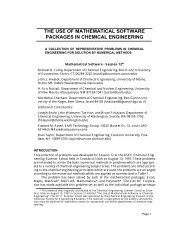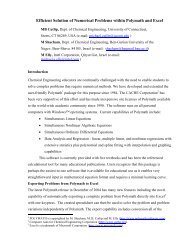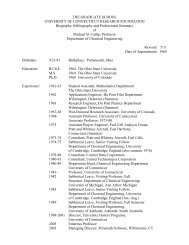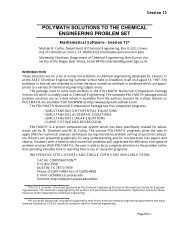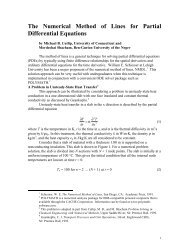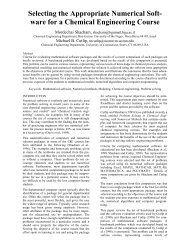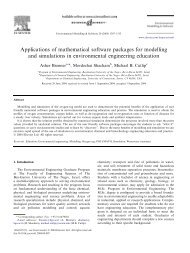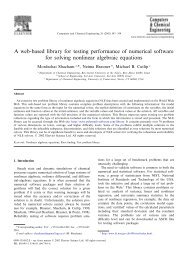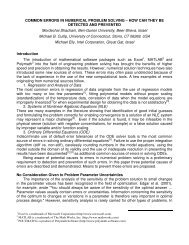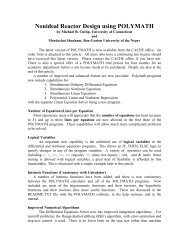Maple Solutions to the Chemical Engineering Problem Set
Maple Solutions to the Chemical Engineering Problem Set
Maple Solutions to the Chemical Engineering Problem Set
Create successful ePaper yourself
Turn your PDF publications into a flip-book with our unique Google optimized e-Paper software.
ToKelvin:=x->x+273.15;<br />
T(K) := map(ToKelvin,T(C));<br />
ToKelvin := x → x + 273.15<br />
TK ( ) := [ 236.45, 253.55, 261.65, 270.55, 280.75, 288.55, 299.25, 315.35, 333.75, 353.25 ]<br />
We must take <strong>the</strong> reciprocal of <strong>the</strong>se values<br />
> r := x-> 1/x;<br />
Tover := map(r,T(K));<br />
1<br />
r := x →<br />
x<br />
Tover := [ .004229223937 , .003943995267 , .003821899484 , .003696174459 , .003561887801 , .003465603881<br />
,<br />
.003341687552 , .003171079753 , .002996254682 , .002830856334<br />
]<br />
We are now ready <strong>to</strong> fit <strong>the</strong> transformed data<br />
> CCfit:=fit[leastsquare[[Tau,rho], CC2, {A,B}]]([Tover,lnpdata]): CCfit;<br />
ρ = 8.752009662 − 2035.330939 Τ<br />
This result can be expressed in terms of our orginal variables<br />
> CC3:=subs(v1,v2,CCfit): CC3;<br />
2035.330939<br />
log10( P )<br />
= 8.752009662 −<br />
T + 273.15<br />
We make a function of <strong>the</strong> right hand side for plotting purposes<br />
> CCF:=unapply(10^rhs(CC3),T);<br />
⎛<br />
2035.330939 ⎞<br />
⎜8.752009662<br />
−<br />
⎟<br />
⎝<br />
T + 273.15 ⎠<br />
CCF := T → 10<br />
and display this new result along with <strong>the</strong> polynomial fits and <strong>the</strong> data.<br />
> n:='n':<br />
p1:=plots[logplot]([seq(rhs(eqn[n]),n=2..5),CCF(T)],T=-40..100,color=[red,yellow,green,black,blue,purple]):<br />
> plots[display]({p1,lplot2,lplot1});<br />
Page 18



